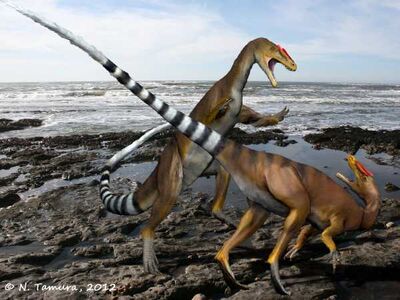
Bicentenaria (pronunced: bee-sen-ten-ahr-ree-uh) was related to the giant Tyrannosaurus, the smaller Velociraptor and modern-day birds. It is very likely to be the first representative found in a new lineage within the family of coelurosaurs, the dinosaurs that eventually give rise to birds. Officials from the Argentine Museum of Natural Science dubbed the prehistoric creature, Bicentenaria Argentina, to mark the 200-year anniversary of the museum. The Bicentenaria is likely to have measured between 2.5 and 3 metres long and was slim and agile. Novas said the carnivorous dinosaur represents a new line leading to the evolution of modern-day birds and may have been partially or completely covered in feathers itself. The shape of its sharp curved teeth and its long claws suggest Bicentenaria hunted other smaller dinosaurs. The bones were discovered in Rio Negro in Argentina’s Patagonia region and are thought to be approximately 90 million years old. The actual fossil remains consist of around 130 bones from at least 3 adults and several juveniles.
Scientific classification
Phylum: Chordata
Class: Reptilia
clade: Dinosauria
clade: Theropoda
clade: Tetanurae
Infraorder: Coelurosauria
Genus: Bicentenaria, 2012
Type species: Bicentenaria argentina, 2012